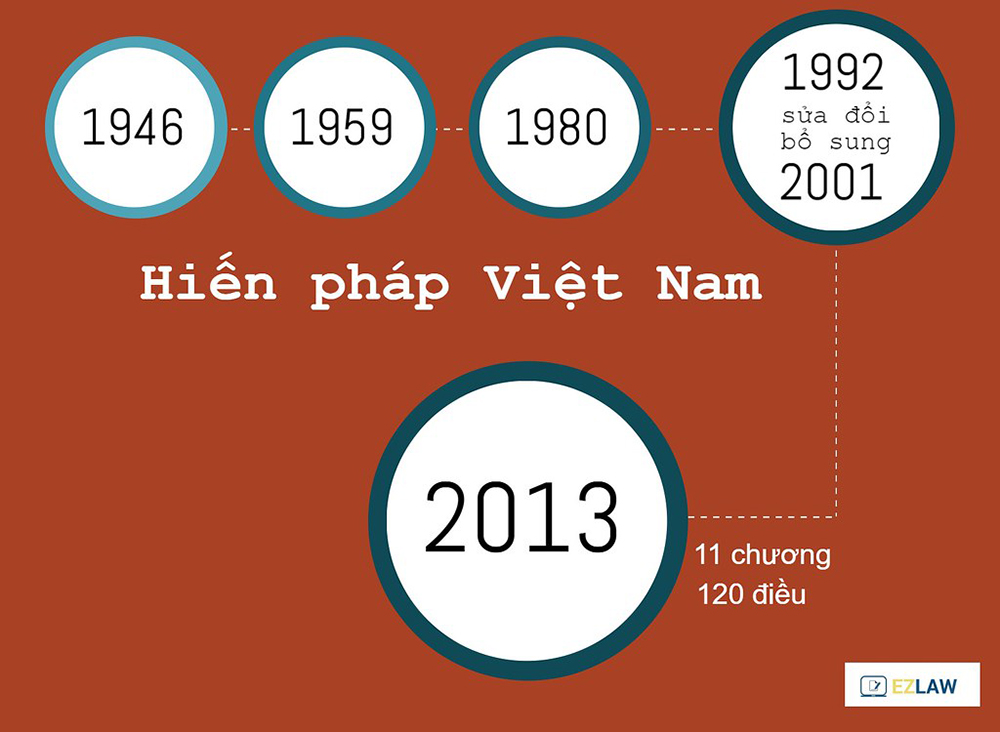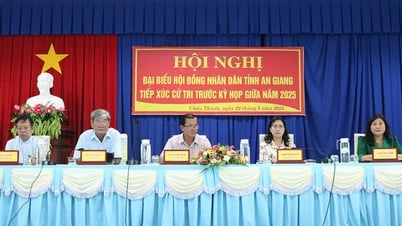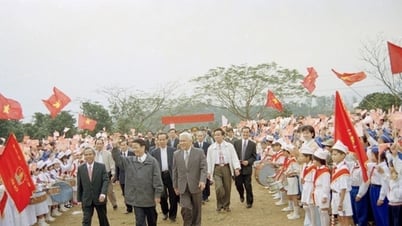The 1946 Constitution was born in the context of Vietnam having just gained independence after the August Revolution of 1945. On September 2, 1945, President Ho Chi Minh read the Declaration of Independence, giving birth to the Democratic Republic of Vietnam. However, at this time, the country faced many economic and political difficulties. Therefore, the promulgation of a democratic Constitution, affirming the nation's autonomy and ensuring freedom and democracy for the people was an urgent task.
From this urgent need, in the first meeting of the Provisional Government on September 3, the construction of the Constitution was proposed. Within October, the draft Constitution was submitted to the Government; in November it was published publicly in the newspaper Cuu Quoc to gather public opinions; and in the second session of the National Assembly it was approved. This is a Constitution built in a very short time, but has very profound content value. Although short (7 chapters, 70 articles), it still ensures the core spirit of democracy, power belongs to the people.
Existing for 13 years, the 1946 Constitution completed its mission and needed to be supplemented and changed. After the Dien Bien Phu victory in 1954, the Geneva Agreement was signed, and the country entered a new phase. However, the Southern government (with the support of the US) refused to implement the agreement, leading to the division of the country. Meanwhile, the North proceeded to build socialism. The 1959 Constitution was born, meeting the need for legal changes, suitable for the actual situation of Northern Vietnam during the period of building socialism, and at the same time reflecting the will of the entire people in unifying the country. From the first draft (July 1958) to the revised draft (late December 1959), cadres, party members and the entire population participated in discussions and contributed constructive ideas. When promulgated, the 1959 Constitution included a preamble and 112 articles, divided into 10 chapters, built according to the socialist constitutional model.
Lasting for 21 years, from the time the country was at war and divided, to the time of peaceful reunification, the 1959 Constitution also fully fulfilled its historical mission, giving way to the 1980 Constitution (147 articles, divided into 12 chapters). For the first time in the history of Vietnam's constitution, the 1980 Constitution institutionalized the leadership role of the Communist Party over the State and society in one article of the Constitution (Article 4); institutionalized the Party's guidelines on the cause of building socialism nationwide. Meanwhile, the 1992 Constitution was born with the goal of institutionalizing the renovation policy, opening a new period of development for the country; marking Vietnam's transformation from a centrally planned economy to a socialist-oriented market economy, while affirming the continued leadership role of the Party.
After more than 25 years of implementing the renovation process, Vietnam has achieved many great achievements in all fields. However, in the context of increasingly deep international integration, the need to amend and supplement the Constitution to suit the new situation is necessary. On that basis, the 2013 Constitution was promulgated, clearly demonstrating the viewpoint of the Communist Party of Vietnam on promoting people's power and continuing to promote socialist democracy.
Article 119 of the 2013 Constitution states: The Constitution is the fundamental law of the Socialist Republic of Vietnam, with the highest legal effect. All other legal documents must comply with the Constitution. Any violation of the Constitution will be punished. The National Assembly, its agencies, the President, the Government, the People's Court, the People's Procuracy, other State agencies and the entire People are responsible for protecting the Constitution. The Constitution is promulgated by the National Assembly. Amendments to the Constitution are also carried out by the National Assembly.
The country is preparing to enter the 6th amendment of the Constitution, to meet the requirements of innovation and enter a new era. Specifically, in Conclusion 127-KL/TW, dated February 28, 2025, the Politburo requested to review, amend and supplement the regulations of the Party, the Constitution and the laws of the State. In particular, the National Assembly Party Committee is assigned to urgently preside over and coordinate with the Government Party Committee to direct the Party Committee of the Law and Justice Committee, the Party Committee of the Ministry of Justice, and relevant agencies to study the amendment and supplementation of a number of articles of the Constitution with the scope of issues on the organization of the apparatus of the political system. Then, report to the Politburo in early March 2025 to submit to the Central Executive Committee of the Party before April 7, 2025; the time to complete the amendment and supplementation of a number of articles of the 2013 Constitution is no later than June 30, 2025.
In May 2025, the 9th regular session of the National Assembly was filled with many important contents, including the amendments to the 2013 Constitution and related laws. It can be seen that the changes and additions to the contents of the Constitutions through each period not only inherit the core values of the Vietnamese constitutional system, but also demonstrate the development and adjustment to the requirements of the new situation. The Constitution is the supreme legal foundation, a testament to the leadership of the Party and the aspirations of the People for democracy, fairness, and civilization. Certainly, the latest Constitution will also meet the requirements of the new era!
TM
Source: https://baoangiang.com.vn/sua-doi-hien-phap-vi-nuoc-vi-dan-a417777.html





![[Photo] Top players gather at the 2025 Nhan Dan Newspaper National Table Tennis Championship](https://vphoto.vietnam.vn/thumb/1200x675/vietnam/resource/IMAGE/2025/5/23/9ad5f6f4faf146b08335e5c446edb107)


![[Photo] Anh Hoang - Dinh Duc successfully defended the men's doubles championship of the National Table Tennis Championship of Nhan Dan Newspaper](https://vphoto.vietnam.vn/thumb/1200x675/vietnam/resource/IMAGE/2025/5/23/d6ab3bcac02c49928b38c729d795cac6)


















































































Comment (0)